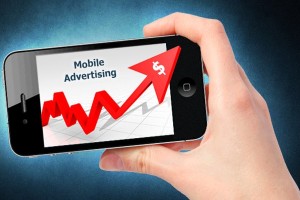A new Zenith prediction states that 75 percent of usage will occur over mobile devices next year.
Zenith has released a new mobile web trends forecast that showed a notable growth in smartphone based internet use next year. It predicted that three quarters of all 2017 internet use will occur over mobile devices.
This could prove to be important insight for marketers that are deciding on their mobile ad budgets.
Last year, Zenith’s mobile web trends prediction was that 2016 would see 71 percent of internet use from smartphones and tablets. It also estimated that 60 percent of global internet advertising dollars would be spent for mobile ads by 2018. This latest prediction was released in the company’s Mobile Advertising Forecasts report.
 The report stated that in 2018, marketers would spend $138 billion on mobile advertising. That figure “is more than will be spent on newspaper, magazine, cinema and outdoor advertising put together,” stated the report.
The report stated that in 2018, marketers would spend $138 billion on mobile advertising. That figure “is more than will be spent on newspaper, magazine, cinema and outdoor advertising put together,” stated the report.
The Zenith mobile web trends forecast also predicted this year’s mobile ad spend to be $71 billion.
A growing number of ad dollars are shifting from TV to digital, particularly focused at smaller screens. Google, Facebook and Snapchat are now prime platforms for mobile marketers. According to DDG Inc. consultancy firm managing director of innovation and digital media exec, Scott Singer, “In four years, you’ve gone from 40 per cent to 70 per cent (of total internet use) in mobile.”
This mobile marketing trend is sending ad dollars away from traditional media such as newspapers and television and is directing it to media, entertainment and communications platforms.
Telecommunications companies are bringing digital distribution and content together as mobile data consumption – particularly video – is on the rise. The goal to this mobile web trend is to draw consumers to view digital content on mobile devices while appealing to advertisers. Companies from small businesses to giant corporations. This has been reflected in the recent announcement that AT&T was seeking to purchase Time Warner Inc and that Verizon Communications Inc is interested in Yahoo Inc. In both cases, the goal is to help leverage available user data for targeting ads on behalf of marketers.
BIA/Kelsey research has shown that this one area is taking a considerable share of marketing budgets.
Marketers are increasing their mobile ad spend in very specific areas. New research shows that both sponsored content and native advertising are becoming an increasingly important focus.
This is particularly true since mobile ad blocking has become such a popular practice among consumers.
The BIA/Kelsey chief analyst and vice president of content, Michael Boland, said that “Native social advertising is the big headline of this forecast.” He added that the FAN and news feed add success from Facebook has provided a new perspective on advertising. As a result, “we’ve dialed up native social’s share of the mobile ad revenue pie.”
Trends in mobile ad spend have also shown that Snapchat and Instagram are moving in similar directions. These include changes to boost the attractiveness and impact of native social formats for marketers.
The report also underscores the falling mobile ad spend when it comes to banner advertising methods.
 Even before this report was published, it was clear that banner ads have already fallen out of favor on Facebook. The platform determined that they don’t have very much value when compared to native and video advertising methods.
Even before this report was published, it was clear that banner ads have already fallen out of favor on Facebook. The platform determined that they don’t have very much value when compared to native and video advertising methods.
Boland also explained that the growing use of ad blockers has only accelerated the mobile marketing industry’s trends. As a whole, mobile advertising is moving away from banners and toward material that is immune to blockers. This primarily includes content marketing.
Boland stated that the millennial generation is also being taken into account. For them mobile ad spend on native social ads is more important than any other adult generation. Therefore, marketers grabbed hold of this style and use it to take aim at this extremely important demographic.
This shift is clearly visible through Snapchat. That platform is exceptionally popular among the younger generations. It recently made some marketer-friendly changes. Among those changes include the automated application programming interface (API) designed for its ad partners. With rapid growth in its user base and great engagement metrics, Snapchat uses native advertising over any other method. It is completely free of banner ads and while this may seem limiting, it has been vital for user trust.
 The report stated that in 2018, marketers would spend $138 billion on mobile advertising. That figure “is more than will be spent on newspaper, magazine, cinema and outdoor advertising put together,” stated the report.
The report stated that in 2018, marketers would spend $138 billion on mobile advertising. That figure “is more than will be spent on newspaper, magazine, cinema and outdoor advertising put together,” stated the report.
 Even before this report was published, it was clear that banner ads have already fallen out of favor on Facebook. The platform determined that they don’t have very much value when compared to native and
Even before this report was published, it was clear that banner ads have already fallen out of favor on Facebook. The platform determined that they don’t have very much value when compared to native and 